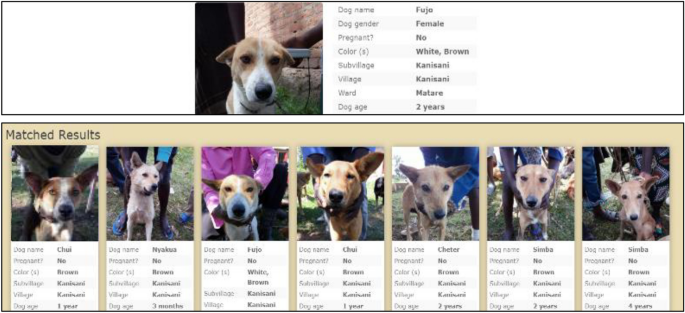Have you ever found yourself wondering, “How old is my dog in dog years?” It’s a common question among pet owners who want to understand their furry friend’s age in human terms. Unraveling the mystery behind your dog’s age conversion can provide valuable insights into their life stage and overall health. While the traditional belief that one dog year equals seven human years is a good starting point, the calculation is actually more nuanced than a simple multiplication. Factors like breed, size, and health all play a role in determining the accurate age conversion.
There are many moments I will cherish from Election Night. This one is my favorite. Right after we heard we won, my 12-year-old son Gus yelled, “I get a dog!”
I guess he remembered that promise Gwen and I made him two years ago… pic.twitter.com/YdSuPog21D
— Tim Walz (@Tim_Walz) November 12, 2018
Introduction: Exploring the Concept of Dog Years
Have you ever wondered, “How old is my dog in dog years?” The concept of dog years is a fascinating one that many pet owners ponder. Contrary to popular belief, calculating your dog’s age in human years isn’t as simple as multiplying by 7. Understanding the age equivalency between dogs and humans involves various factors such as size, breed, and genetics. Let’s delve deeper into this intriguing topic to uncover the mystery behind how old our furry companions are in dog years.
The Traditional Dog Years Calculation
For years, the common method for determining a dog’s age in human years was to use the 7:1 ratio. However, recent studies have shown that this approach oversimplifies the aging process in dogs. To get a more accurate representation of your dog’s age, specialists now suggest a more nuanced calculation.
Factors Affecting the Aging Process
The age equivalency of dogs and humans is influenced by various factors. Large breeds age faster than smaller ones, and genetics play a significant role in determining lifespan. Understanding these variables is crucial in determining how old your dog truly is in dog years.
- Breed: Different breeds have different lifespans. A Chihuahua may live longer than a Great Dane.
- Size: Smaller dogs tend to have longer lifespans compared to larger breeds.
- Health: A dog’s overall health and lifestyle impact how it ages.

Understanding Dog Aging: The Science Behind Dog Years
Understanding how old your dog is in dog years can be confusing, but it is essential for their health and well-being. The concept of dog years is based on the idea that dogs age faster than humans due to their shorter lifespan. One common belief is that one dog year is equivalent to seven human years, but the reality is more complex.
The Aging Process in Dogs
Dogs age differently depending on their size, breed, and overall health. Larger breeds tend to have shorter lifespans compared to smaller breeds. Genetics also play a significant role in how dogs age.
Factors Affecting Dog Aging
Exercise and diet play a crucial role in determining how quickly a dog ages. Proper nutrition and regular physical activity can help extend a dog’s lifespan.
- Genetics: Some breeds are predisposed to certain health conditions that can affect their overall lifespan.
- Veterinary Care: Regular check-ups and preventive care can help detect age-related issues early.
Calculating Your Dog’s Age: How to Determine Your Dog’s Age in Human Years
Have you ever wondered how old is your dog in dog years? Understanding your furry friend’s age in human years can provide valuable insights into their health and overall well-being. Calculating your dog’s age in human years can be a bit tricky as it varies based on their breed and size. However, there is a general guideline you can follow to get a rough estimate.
The 7:1 Ratio Method
To determine your dog’s age in human years using the 7:1 ratio method, simply multiply your dog’s age by 7. For example, if your dog is 3 years old, the calculation would be: 3 x 7 = 21 human years. While this method provides a basic estimate, it’s not entirely accurate as different breeds age differently.
Breed-Specific Formulas
For a more precise calculation, consider using breed-specific formulas that take into account the varying aging rates of different dog breeds. Some larger breeds age faster than smaller breeds, so using a tailored formula can give you a more accurate representation of your dog’s age in human years.
- Consult your vet for breed-specific aging guidelines
- Use online calculators designed for specific breeds
- Consider factors like size, weight, and overall health when calculating age

Factors Affecting Dog Aging: Breed, Size, and Health Considerations
Understanding how old your dog is in dog years can vary based on various factors. Breed, size, and overall health play crucial roles in determining your furry friend’s aging process.
Breed
Each dog breed has its own lifespan tendencies. Larger breeds tend to have shorter lifespans compared to smaller breeds. For instance, Great Danes have an average lifespan of 6-8 years, while Chihuahuas can live up to 18 years or more.
Understanding your dog’s breed characteristics can give you insight into how quickly they may age in relation to their size and genetic makeup. Size matters in the aging process.
Size
The size of your dog also plays a significant role in their aging process. Larger breeds tend to age faster and have shorter lifespans compared to smaller breeds. This is due to the increased stress on their bodies, leading to potential health issues.
- Small breeds like Pomeranians or Yorkshire Terriers often live longer, sometimes reaching their late teen years or even early 20s.
- Conversely, larger breeds like Saint Bernards or Newfoundlands may have lifespans of around 8-10 years due to their size and associated health concerns.
Comparing Dog Years: A Look at Popular Dog Breeds and Their Aging Patterns
As a pet owner, it’s natural to wonder, “How old is my dog in dog years?” Understanding the aging patterns of different dog breeds can give you insights into their health and behavior. Let’s explore the age equivalence of popular dog breeds to humans in the following sections.
Small Breeds
Small dog breeds, such as Chihuahuas and Pomeranians, tend to live longer than larger breeds. On average, they age slower, with one dog year equivalent to about four human years.
Medium Breeds
Medium-sized breeds like Beagles and Bulldogs age at a moderate pace compared to small and large breeds. They typically have a lifespan of 10-15 years, with one dog year equaling around five human years.
Large Breeds
Large breeds, including Great Danes and Saint Bernards, age more rapidly than smaller breeds. Their lifespan ranges from 8-12 years, with one dog year being approximately six human years.
Tips for Keeping Your Dog Healthy and Happy Throughout Its Years
As a pet parent, ensuring the health and happiness of your furry friend is crucial to their overall well-being. To help you navigate the journey of caring for your dog as they age, here are some essential tips:
Maintain a Balanced Diet
Provide your dog with a nutritionally balanced diet that is appropriate for their age and size. Consult with your veterinarian to determine the best food choices for your dog’s specific needs.
Ensure your dog has access to fresh water at all times 2023.
Regular Exercise Routine
Engage your dog in regular physical activity to keep them fit and maintain a healthy weight. Daily walks, playtime, and interactive toys can help stimulate both their body and mind.
- Take your dog for regular walks or runs to keep them active.
- Engage in interactive play sessions for mental stimulation.
Frequently Asked Questions
- How do you calculate a dog’s age in dog years?
- To calculate a dog’s age in dog years, you can multiply the dog’s actual age by 7. This is a common method used to estimate a dog’s age in human years.
- Is the 7-year rule for calculating dog years accurate?
- While the 7-year rule is a simple way to estimate a dog’s age in human years, it is not entirely accurate. The relationship between dog years and human years varies based on factors such as the dog’s breed and size.
- Do all dog breeds age at the same rate in dog years?
- No, different dog breeds age at different rates in dog years. Smaller breeds tend to live longer and age more slowly compared to larger breeds. Factors such as genetics and lifestyle also play a role in a dog’s aging process.
- How can I determine my dog’s actual age in dog years?
- You can determine your dog’s actual age in dog years by considering various factors such as breed, size, and health history. Visiting a veterinarian can also help in accurately estimating your dog’s age in dog years.
- Are there any health implications related to a dog’s age in dog years?
- Yes, a dog’s age in dog years can impact their health. Older dogs may be prone to age-related health issues such as arthritis, heart problems, and cognitive decline. It’s important to provide proper care and attention to aging dogs to ensure their well-being.
Unveiling the Canine Age Mystery: How Old Is My Dog in Dog Years?
In conclusion, understanding how old your furry companion is in dog years is not a straightforward calculation but involves considering various factors such as breed and size. By using the general guideline of multiplying your dog’s age by 7 to get an approximate age in dog years, you can better comprehend where your pet stands in terms of maturity and life stage. Remember that the age equivalency may vary across breeds, so consulting with a veterinarian for personalized guidance is always advisable. Additionally, providing proper care, nutrition, exercise, and regular veterinary check-ups will ensure a long and healthy life for your beloved canine friend. Embrace each moment with them, regardless of their age!

